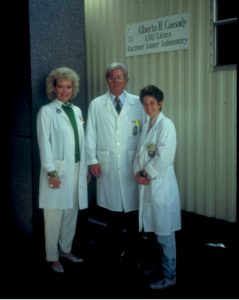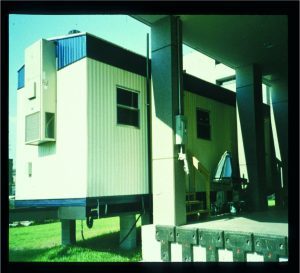Laser vision correction at 30
How a brave patient and a trash compactor advanced corneal laser surgery

Howard Larkin
Published: Sunday, March 31, 2019
 Mrs Alberta H Cassady 11 days after the world’s first human PRK procedure, just before her exenteration[/caption]
For all the dedicated work by brilliant researchers including Marguerite McDonald MD, Stephen L Trokel MD, Charles R Munnerlyn PhD and Stephen D Klyce PhD, the early development of excimer laser vision correction technology also greatly benefited from the bravery of a dying woman, and the recalcitrance of sanitation engineers at Louisiana State University Health Sciences Center in
New Orleans.
Mrs Alberta H Cassady 11 days after the world’s first human PRK procedure, just before her exenteration[/caption]
For all the dedicated work by brilliant researchers including Marguerite McDonald MD, Stephen L Trokel MD, Charles R Munnerlyn PhD and Stephen D Klyce PhD, the early development of excimer laser vision correction technology also greatly benefited from the bravery of a dying woman, and the recalcitrance of sanitation engineers at Louisiana State University Health Sciences Center in
New Orleans.
 Dr Marguerite McDonald, Dr Stephen D Klyce and
a lab tech standing in front of the laser lab named
after Mrs Cassady
Dr Marguerite McDonald, Dr Stephen D Klyce and
a lab tech standing in front of the laser lab named
after Mrs Cassady